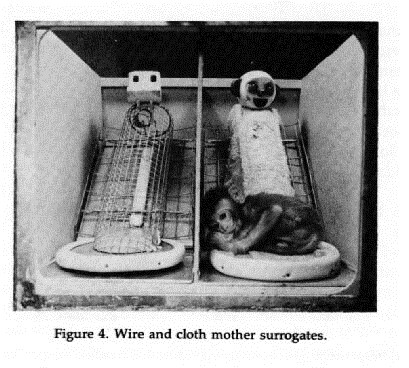Your mother, metaphors, and other monkey business: How experiences of physical warmth shape how we think about relationships
The work described above is congruent with the theoretical contributions of Lakoff and Johnson (1999), namely that the sensory experience ( warmth) should influence the abstract concept (affection), but not vice versa. Now think of the link between time and space – it seems quite intuitive already that the experience of space affects time, but not the other way around. People rarely use metaphors to express space in terms of time, but they do use metaphors to express time in terms of space. Indeed, research findings confirm this idea (Casasanto & Boroditsky, 2008). However, is this always the case?We don’t think so. Social relationships might reflect something much more fundamental to our (and other mammalian) species that physical warmth may extend beyond mere conceptual metaphors: They reflect basic properties of how human beings coordinate their social relationships. We departed from the asymmetrical assumptions of conceptual metaphors in a study in which we were interested in the reverse idea of the warmth-affection link (i.e., that affection would ‘prime’ warmth). Because in fact, it seems rather illogical that affection is always experienced with being outside in a warm temperature, right?But now imagine that you are in a lab cubicle, and believe that you are doing a study together with someone in another cubicle. During your experiment, you learn that this person is very similar to you (or not so much). After this experiment, you participate in a follow up study, in which you have to estimate the temperature of the lab. Indeed, we found what you may now expect: People that were interacting with a more similar other thought that the temperature in the cubicle was higher. Furthermore, this effect does not only work for similarities, but also for differences: When participants felt more dissimilar, they estimated the room temperature as lower (IJzerman & Semin, 2010; see also Szymkow, Chandler, IJzerman, Parzuchowski, & Wojciszke, in press; Zhong & Leonardelli, 2009).
Can we take this theme even further? How fundamental to human experience is physical warmth? In order to understand how important it may be, we will look at some earlier literature. In the 1960s, Harry Harlow conducted experiments with infant macaque monkeys. In an experiment, Harlow discovered that infant macaques preferred a surrogate terry-clothed mother as their caregiver over a wire-mesh monkey (see figure left), even when the latter provided food. Although both radiated heat, it suggests that close, physical comfort is even more fundamental than nourishment in terms of importance and priority. Being physically close (or, as the anthropologist Alan Fiske has noted, moving in synchrony or sharing fluids, such as semen or saliva) invariably involves experiencing physical warmth. Indeed, through evolution, our bodies may have adapted to recognize what is important to us: Our social relations, which we can start recognizing through temperature (see Caporael, 1997; IJzerman & Koole, 2011).Earlier we discussed how people may integrate the physical properties of one concept into another concept. Essentially, our ‘software’ can be programmed such that we integrate two different schemas. But what if our bodies have been adapted throughout multiple generations – that throughout multiple generations our hardware has changed? While we have not tested this idea directly, we were curious whether people would interpret their social relations through bodily simulations: Does a change in your social relations change your physiological state?In order to find this out, we used an experimental paradigm, which has been used quite often in social psychology – a game called Cyberball.
The premise is simple: People are either included or excluded in a computer-generated ball-tossing game (depicted above). They may receive the ball three times, via the their ‘hand’ rendered at the bottom of the screen, but after those first three times they see the other two players (who are actually pre-programmed) throw the ball to each other, excluding the participant. In the other condition participants simply continue to play the game. While this may seem relatively ineffective, numerous studies have shown that people feel very bad when they are excluded from this game – even when they know the other players are non-human (see, e.g., Williams & Jarvis, 2006).And not only do they feel bad: In our most recent research, we measured the skin temperature of participants’ index fingers.





